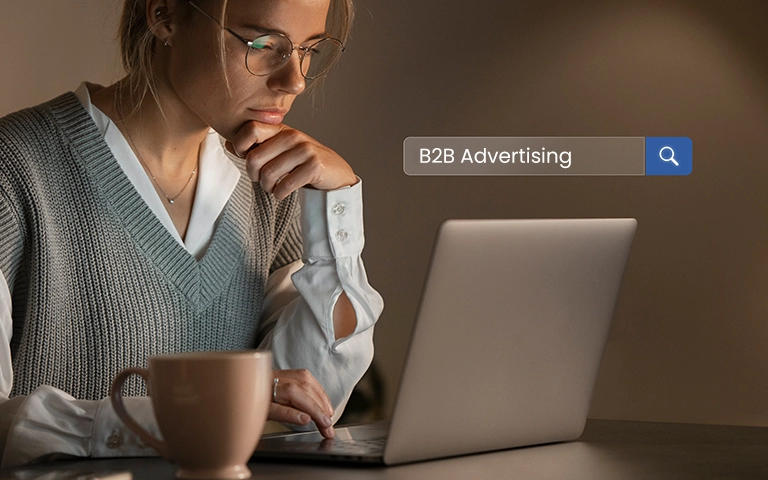
Lean on Influencer Partnerships to Drive Demand in a Lean Economy
In this article
Introduction
B2B Influencer Marketing in a Recession
How Influencer Partnerships Build Brand Visibility and Revenue
-
 Cost-effective reach helps you make the most of your constrained resources. Compared to
traditional advertising, influencer marketing can reach a large audience at a lower cost per impression,
especially when partnering with influencers who align well with your target market.
Cost-effective reach helps you make the most of your constrained resources. Compared to
traditional advertising, influencer marketing can reach a large audience at a lower cost per impression,
especially when partnering with influencers who align well with your target market. -
Enhanced credibility bolsters the impact of your messages with hesitant customers. By associating your brand with respected industry thought leaders, you gain credibility and trust among buyers more likely to consider your product or solution.
-
Engaging your target audience becomes more effective when they are focused on economic challenges. Carefully selecting influencers with a relevant audience ensures your message reaches the right people who are already interested in your industry.
-
Thought leadership positioning is validated and amplified by influencers who showcase your expertise and confirm the leadership of your brand.
Foundations of Influencer Marketing
Elements of Influencer Marketing
What Does Influencer Marketing Cost?
How to Measure Success
B2B Influencer Marketing Case Studies
- General Electric (GE) developed a #GEInstaWalk campaign with Instagram influencers and GE superfans by giving them a tour of GE’s research and development center. They were encouraged to share their experiences with their 3.5 million followers. Within 48 hours, the program generated 200 social engagements.
- Dell Technologies engaged influencers to promote their study on “The Data Paradox.” Dell’s own eBook and 39 social posts yielded 1,100 clicks and 1,600 engagements. However, by involving 8 influencers who produced over 30 more posts, they saw an additional reach of 1.7 million impressions and over 365 social engagements. Compared to earlier campaigns without influencers, Dell realized a 276% increase in page views to more than 8,000.
Influencer Marketing in a Recession
What’s Holding Your Team Back from Engaging the Right Leads?
Be a part of 1000+ successful clients that have chosen UnboundB2B for growth.
Discover more resources

Successful B2B Lead Generation requires generating Marketing Qualified Leads. In this article, we have discussed how to identify MQLs and 10 practical tips to generate more MQLs. These tips cover essential strategies from optimizing your sales funnel to leveraging engaging videos and interactive content. You'll learn about the importance of strong calls-to-action, utilizing chatbots, and implementing Account-Based Marketing. We'll explore how a Customer Data Platform can improve your targeting and lead-generation efforts. By implementing these strategies, you can significantly improve your MQL generation and boost your B2B growth.

Struggling to grow your B2B business? The key lies in understanding the difference between demand generation and demand capture. While one creates awareness and interest, the other converts that interest into tangible results. But which strategy should you focus on for sustainable growth? This blog post has the answer. Plus, you can find practical strategies for both demand generation and demand capture. Read on to learn how you can scale your B2B business.

Demand for SaaS products and services has increased significantly in recent years. By making cloud-based software solutions more accessible, SaaS companies bring technology closer to modern businesses. The increased demand has resulted in a highly competitive SaaS environment. One effective strategy companies can use to stay ahead of the competition is SaaS advertising. Read on to discover how ad platforms facilitate SaaS advertising and find out which advertising platforms your company can leverage to succeed in sales.


 Enhanced credibility bolsters the impact of your messages with hesitant customers. By
associating your brand with respected industry thought leaders, you gain credibility and trust among buyers
more likely to consider your product or solution.
Enhanced credibility bolsters the impact of your messages with hesitant customers. By
associating your brand with respected industry thought leaders, you gain credibility and trust among buyers
more likely to consider your product or solution.
 Engaging your target audience becomes more effective when they are focused on economic
challenges. Carefully selecting influencers with a relevant audience ensures your message reaches the right
people who are already interested in your industry.
Engaging your target audience becomes more effective when they are focused on economic
challenges. Carefully selecting influencers with a relevant audience ensures your message reaches the right
people who are already interested in your industry.
 Thought leadership positioning is validated and amplified by influencers who showcase your
expertise and confirm the leadership of your brand.
Thought leadership positioning is validated and amplified by influencers who showcase your
expertise and confirm the leadership of your brand.





